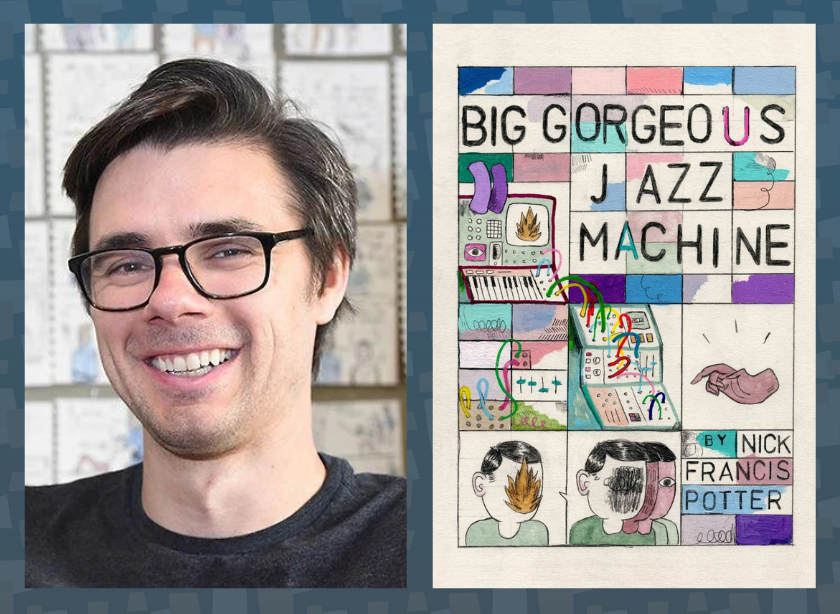Daniel Boone Regional Library: Is there a story behind the title of this collection? I did notice it’s the same title as your PhD thesis from the University of Missouri a few years back.
Nick Francis Potter: I’ve always enjoyed writing titles and often think of titles for pieces well in advance of writing or drawing anything. In those instances, the titles kind of evoke a range of potential work they might contain. This was definitely true of this collection. I had this title in my head for a few years, which came together as I was playing with some of the ideas in the book, including the section of Imaginary Houses and many of the abstract works, which originally began as a kind of visual representation of music I was listening to at the time. But the title preceded those drawings, serving as a kind of poetic phrase to aim for.
DBRL: Comics poetry as an art form has started to take off in the last couple of decades. Which audience have you found more open to it, comics readers or poetry readers?
NFP: I think what’s been exciting to me about the form is its capacity to pull in readers from both arenas into the same place. For the literary crowd, I think that comics poetry opens up a whole new world of possibilities, when it comes to what they can do with their writing, which is really exciting. And for cartoonists, comics poetry ends up being a space where adventurous artists can really push the boundaries of what comics can do. So, I don’t know that I would suggest one crowd is more open than the other, but I do think that, collectively, readership tends to be pretty actively creative with producing their own experiments with text and images.
DBRL: Many of your works in this book have gone through various revisions. What drives you to revise your work?
NFP: I think, ultimately, revision comes from a place of being very particular about the quality of work I’m trying to make, which is difficult, because I’m not uniquely skilled when it comes to drawing and painting. As a cartoonist, I’ve leaned into the messiness of my process, partially because that’s where I feel most successful and satisfied with my work. I’m motivated to revise when I feel that there is something significant that’s happening in the work and I can make it better.
DBRL: It’s interesting that even when you use mechanical lettering in your work, it also shows signs of a human touch. Can you tell us how you have developed your approach to lettering?
NFP: The mechanical lettering began on a whim while playing with some tools I had on hand. I’m not very consistent when it comes to lettering, and I liked the design of the stencils, so that’s how it began. But, as with the rest of my work, I really enjoy the physical artifacts of drawing and painting, including the kind of human presence that figures into imperfect artworks, so I really leaned into that when it came to the lettering. I wanted it to be legible, but also contain the aesthetics present in the rest of my work. In some ways, I don’t know if I could use the lettering tools without them being so messy, but I certainly enjoyed the controlled chaos.
DBRL: Read anything good lately you’d like to recommend?
NFP: A few comics that I’ve read lately that I really enjoyed include Henry McCausland’s “Eight-Lane Runaways,” Mason Dickerson’s “Housecat Trouble,” Valentine Gallardo’s “Am I Breathing Too Loud?,” and Disa Wallander’s “Becoming Horses.” I’ve also been playing this cool game that’s primarily text-based, called “Citizen Sleeper,” which has a really cool sci-fi narrative with some great illustrations as well. Also, I’m always re-reading anything by Renee French, Eleanor Davis and Aidan Koch.
DBRL: Where can readers get a copy of your book?
NFP: Locally, you might be able to snag or order a copy at Yellow Dog Bookshop. Online, why not order directly from my publisher at Driftwood Press?



